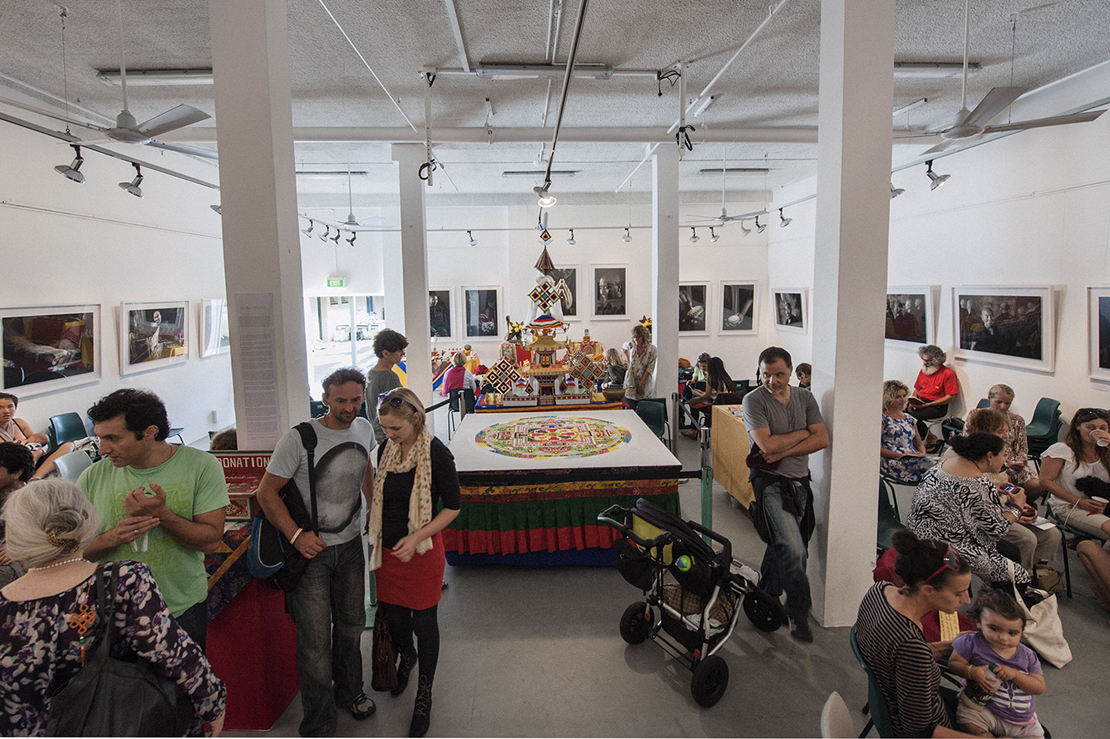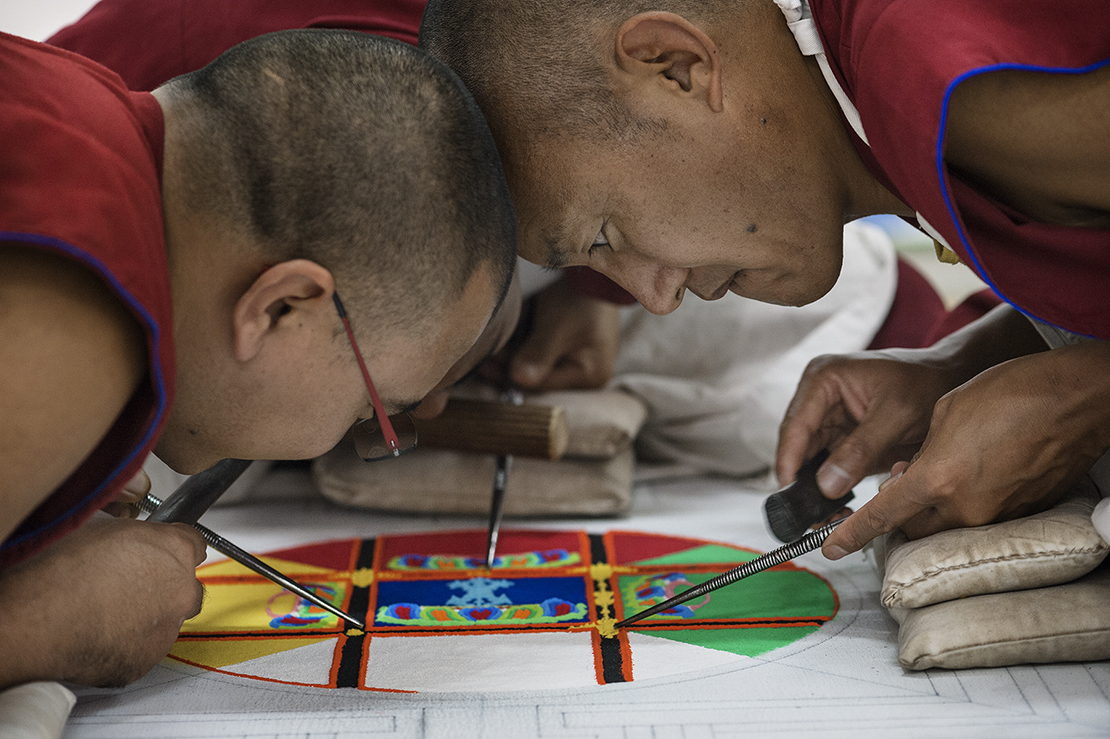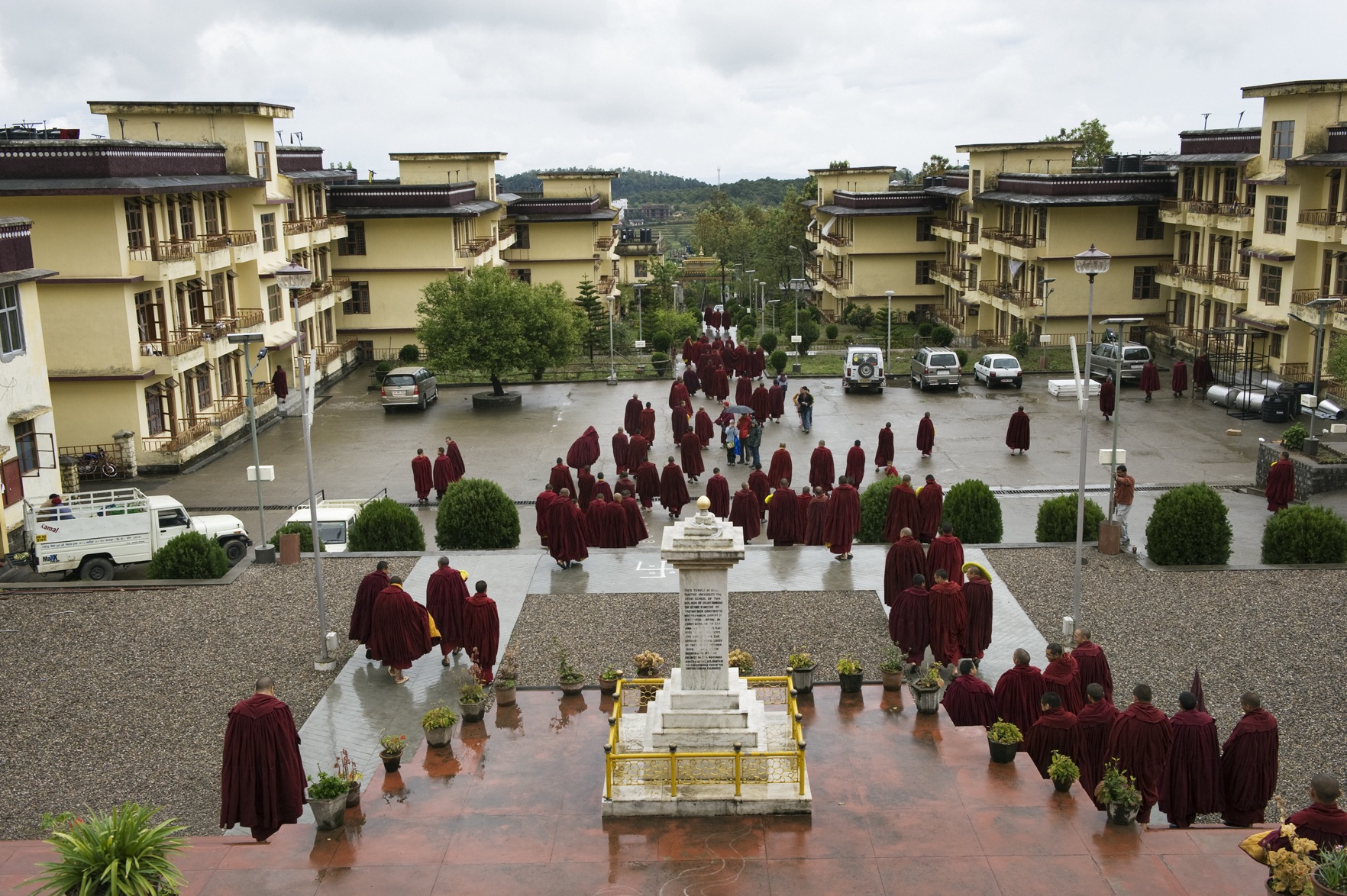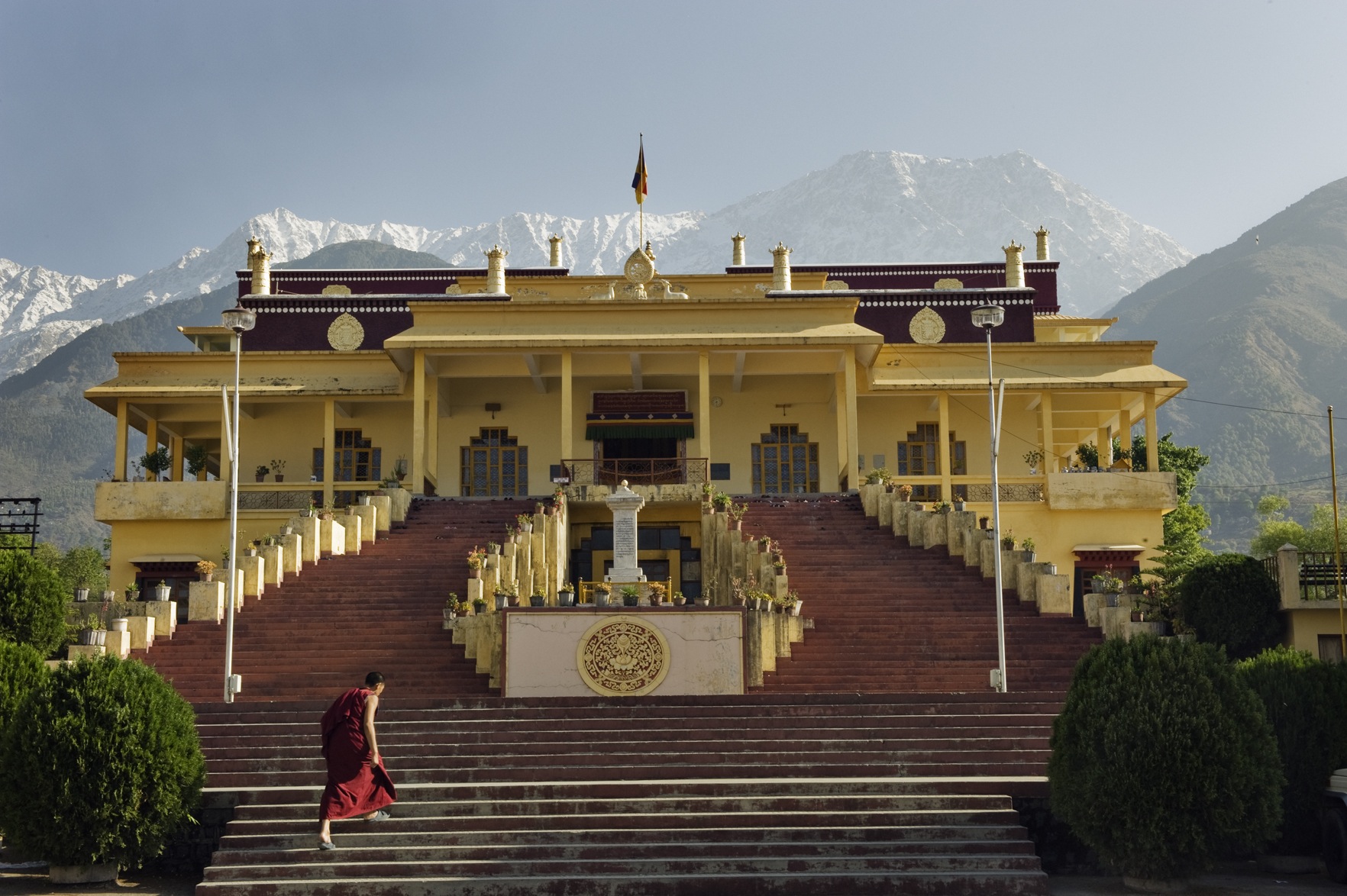About The Event
__
__
The Tibetan monks from the Gyuto Monastery have been visiting the Bondi Pavilion since 2008. It has become their spiritual home in Sydney. In 2010, 2012 and 2014, they worked with Tobi Wilkinson, a Sydney based photographer and Bondi local, to run their workshops there in conjunction with her photographic exhibitions of the monks and their monastery. The support of the Pavilion and Waverly Council has been comprehensive and has resulted in crowds flocking to the two week event from all over Sydney.
There is something especially appealing about Tibet to Australians, who have been some of the most vocal and ardent of supporters of His Holiness the Dalai Lama in all his years in exile. These monks too have rebuilt their monastery in exile in India and they continue to practice their very ancient traditions which remain virtually unchanged in almost 600 years. Formerly very remote and difficult to access, Tibetan Buddhism was barely known outside the borders of the country. With so many monks now living in exile, we in the west have had the most fortunate opportunity to experience these spiritual practitioners first hand and there are none more practised than the Gyuto monks.

Despite the every esoteric nature of their rituals, they are highly accessible. The workshops are designed to allow even those of us who are new to any spiritual practice or to any sort of meditation an instant connection. The monks daily chanting requires nothing more that just sitting quietly for a half an hour and letting them do all the work. Their insightful public talks on issues we all struggle with, such as anger or jealousy are presented in a simple and straightforward manner based on Buddhism’s view of these afflicting emotions.
The Pavilion has proved to be an ideal setting as although their own practises are demanding in detail, they thrive on informality. They are used to people coming straight off the beach in nothing more than swimming costumes and staying to meditate with them. Kids sitting on their laps dripping ice cream and surfers wandering through carrying boards. It is quintessentially Bondi and the cultural cooking pot adds to the heady mix of sun, sand and spirituality.


__
Gyuto Tantric University was established in 1475 and occupied Ramoche Temple in central Lhasa, Tibet until the Chinese Communist Government invasion of 1959 . The monastery was the early focus of an attack which decimated the 900 strong community of monks resulting in the escape and survival into India of only 90 monks. Since that time, these monks have spent their entire lives saving, rebuilding and regenerating the priceless tantric rituals, traditions and practices which are intrinsic to the very continuance of Tibetan Buddhism. Today Gyuto Monastery is a traditional community of 500 monks in New Ramoche Monastery in Sidbhari, Dharamsala in Northern India, home to His Holiness the Dalai Lama for the past 57 years.
The elders, or ‘59ers as they are known, are in their seventies with very few now remaining. They have served their monastery well and are potent symbols of a vanishing Tibet. Their faces are imbued with warmth, love, integrity, wisdom and boundless compassion. Over the past 50 years they have been mother and father, teacher and mentor to hundreds of young monks, gently yet firmly passing on the myriad of ancient rituals and ceremonies for which Gyuto has remained famous throughout the centuries.

To a visitor, Gyuto Monastery presents at once as an unchanged and unchanging traditional Tibetan monastery and yet a community thoroughly aware, welcoming yet largely unaffected by present day influences. While the oldest to the youngest are confronted with cameras, video, film and computers, these things play no part in their daily life which is one of strict learning through the age old methods of oral transmission, memorization, concentration and repetition.
Above all, the monastery is a very busy place. In no way should it be envisaged as a quiet meditative retreat environment. The curriculum is unbending and constant, requests for puja ceremonies are constantly received from all over the world, the monks conduct their own annual schedule of tantric rituals which go on regardless of outside eyes and from 2.30am until 11pm at night, groups of monks are engaged in the courtyards, halls, temple and classrooms debating, chanting, painting, sewing, filling treasure vases or pouches of precious blessed pills, sculpting ritual torma cakes and in addition, learning – mandala creation, harmonic chanting, butter sculpture, Buddhist philosophy and English.
The life of a monk is a life of surrender. From the moment of offering up one’s last lock of hair in the initiation ceremony until the time of death when one’s meagre possessions are distributed back into the monastic community, this is a life of giving. The life of a Gyuto monk is a hard life and not all can last the distance especially the first nine years when chanting in the temple takes as much as 16 hours a day. It is also a life of real practice, of non judgment, of acceptance and of internal responsibility. The results however illustrate the value. Always smiling, perpetually generous, sharing, willing – the habit comes through in the demeanour, in the warmth of the eyes and in the absence of malicious gossip, criticism and blame.
Compassion is the emotion reflected here above all else. It is the most valuable thing these monks possess.


Credit: Anne Lynam
__
Tobi’s interest has always been in traditional black and white photography and especially in the hand printing and developing process which has such an influence on the final image. She spent much of her early career under the guidance of Gordon Undy at Point Light Gallery, exploring the aspects of fine art photography. Tobi found herself drawn into the world of His Holiness the Dalai Lama and the monastery known as the Gyuto Tantric University in Dharamsala. They have become the inspiration for numerous photographic assignments in Australia and India and Tobi was assigned as one of the two official photographers for His Holiness the Dalai Lama’s 2009 tour of Australia. Tobi has had three exhibitions of her monk images along with works hung in the Art Gallery of NSW, the Olive Cotton Awards, the Blake Art Prize and several group and solo exhibitions
The photographic exhibition which lines the walls of the gallery at the Bondi Pavilion has been of a labour of love for Tobi since she first met them in 2008 at a five day teaching of the Dalai Lama. They spent many weeks in the subsequent eight years living with her and her family at her house in Bondi and she has spent an equivalent time living in their monastery in India. The monks are quite shy and it has been a rare privilege to be able to photograph them. Her aim has been to capture more than just the stereotype of shaved heads and robes. In being dazzled by their beautiful smiles and stunning swathes of coloured fabric wrapped around them, we often forget that they are just men, boys and children, all working hard to stay as monks and deal with all the issues that everyone deals with as they grow from childhood through their teen years into adults. It is this individual behind the monk that Tobi has wanted to photograph and present to the public.
The full sale price from each image goes directly to the monastery. No money is taken out to recoup costs or for any other purpose. So a wonderful way to support the monks is to buy an image if it connects with you.